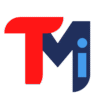Feeling lost in the ever-evolving world of SEO? You’re not alone. With search engine algorithms constantly updating, it can feel like a daunting task to keep your website visible. But what if you had a clear, concise guide to cut through the noise?
That’s exactly what this SEO cheat sheet is for! Think of it as your quick-reference handbook to the essential strategies that will help you climb the search rankings, attract more organic traffic, and get your content seen by the right people. Let’s dive in!
On-Page SEO Essentials: Optimizing Your Content & Website
On-page SEO is all about the elements you can directly control on your website. Master these, and you’re already halfway there!
1. Master Keyword Research
Concept: Understanding what your audience searches for is the bedrock of SEO.
- Brainstorm seed keywords: Start with broad terms related to your business.
- Use tools: Leverage free tools like Google Keyword Planner or explore paid options like SEMrush and Ahrefs to uncover high-volume, relevant keywords.
- Understand search intent: Is someone looking for information, trying to buy something, or navigating to a specific site?
- Target long-tail keywords: These are longer, more specific phrases (e.g., “best vegan restaurants in Navi Mumbai”) that often have lower competition and higher conversion rates.
- Cheat Sheet Tip: Aim for keywords with a good balance of search volume and manageable competition.
2. Craft Compelling Title Tags
Concept: This is the clickable headline that appears in search results – your page’s first impression!
- Include your primary keyword near the beginning.
- Keep it concise (ideally 50-60 characters) to avoid truncation.
- Make it compelling and accurately reflect your content.
- Ensure each page has a unique title tag.
- Cheat Sheet Tip: Think of your title tag as a mini-advertisement for your content.
3. Write Engaging Meta Descriptions
Concept: The short summary displayed beneath your title tag in search results. While not a direct ranking factor, it heavily influences click-through rates.
- Provide a compelling summary of your page (around 150-160 characters).
- Consider including a call to action (e.g., “Learn More,” “Get Your Guide”).
- Make it unique for every page.
- Cheat Sheet Tip: Entice users to click and learn more about your content.
4. Structure Content with Headings (H1, H2, H3…)
Concept: Headings break up your content, making it readable for users and understandable for search engines.
- Use one H1 tag per page for your main title (include your primary keyword).
- Use H2s for main sections and H3s for sub-sections to create a logical hierarchy.
- Naturally include relevant and secondary keywords in your headings.
- Cheat Sheet Tip: Headings act like a table of contents for both readers and search engine crawlers.
5. Create Clean URL Structures (Permalinks)
Concept: Simple, descriptive URLs are easy for users to remember and for search engines to understand.
- Include your primary keyword.
- Keep them short, simple, and descriptive.
- Use hyphens to separate words (e.g.,
yourwebsite.com/seo-cheat-sheet). - Avoid random numbers or jargon.
- Cheat Sheet Tip: Readable URLs are better for everyone.
6. Prioritize High-Quality Content
Concept: The absolute core of SEO. Your content must be valuable, engaging, and comprehensive.
- Write for humans first: Address your audience’s needs and pain points.
- Answer user intent: Thoroughly cover the topic users are searching for.
- Aim for sufficient length: Longer, in-depth content (often 1000+ words for competitive topics) tends to rank better.
- Break up content with short paragraphs, bullet points, and visuals for readability.
- Avoid keyword stuffing: Integrate keywords naturally (aim for 1-2% density).
- Use synonyms and related keywords to enrich your content.
- Cheat Sheet Tip: Be the definitive resource for your chosen topic.
7. Optimize Your Images
Concept: Images improve user experience and can also drive traffic if optimized correctly.
- Compress images: Reduce file size to improve page loading speed.
- Use descriptive file names (e.g.,
seo-cheat-sheet-infographic.jpg). - Add descriptive Alt Text (alternative text): Describe the image content for accessibility and include keywords where relevant.
- Choose appropriate formats (JPG for photos, PNG for graphics, WebP for better compression).
- Cheat Sheet Tip: Faster loading images mean happier users and better rankings.
8. Implement Internal Linking
Concept: Connecting relevant pages within your own website helps search engines understand your site structure and boosts page authority.
- Use descriptive anchor text (the clickable text) that includes the target keyword of the linked page.
- Link to related content that provides additional value.
- Helps search engine crawlers discover and index more of your pages.
- Improves user navigation and encourages them to spend more time on your site.
- Cheat Sheet Tip: Build a web of relevant content that benefits both users and crawlers.
Technical SEO Fundamentals: Behind-the-Scenes Optimization
Technical SEO ensures search engines can efficiently crawl, interpret, and index your website.
1. Boost Site Speed
Concept: How quickly your pages load is crucial for user experience and a direct ranking factor.
- Compress images, minify CSS, JavaScript, and HTML.
- Leverage browser caching.
- Use a Content Delivery Network (CDN) for faster content delivery worldwide.
- Choose a good, reliable hosting provider.
- Monitor your Core Web Vitals (Largest Contentful Paint, First Input Delay, Cumulative Layout Shift) via Google Search Console.
- Cheat Sheet Tip: A faster site leads to lower bounce rates and higher rankings.
2. Ensure Mobile-Friendliness
Concept: With mobile-first indexing, your website must be responsive and perform well on all devices.
- Use a responsive design that adapts to different screen sizes.
- Test your site with Google’s Mobile-Friendly Test tool.
- Cheat Sheet Tip: If your site isn’t mobile-friendly, you’re missing out on a huge audience.
3. Submit an XML Sitemap
Concept: An XML sitemap is a list of all the important pages on your site that you want search engines to crawl and index.
- Generate an XML sitemap (most CMS platforms do this automatically).
- Submit it to Google Search Console and Bing Webmaster Tools.
- Keep it updated as you add or remove pages.
- Cheat Sheet Tip: It’s your direct communication channel to search engines about your content.
4. Manage with Robots.txt
Concept: This file tells search engine crawlers which parts of your website they shouldn’t crawl.
- Use it carefully to block irrelevant or sensitive content (e.g., admin pages, thank you pages).
- Crucially: Ensure you’re not accidentally blocking important pages that you want indexed!
- Cheat Sheet Tip: Use it to guide crawlers, not block your valuable content.
5. Utilize Canonical Tags
Concept: Solves duplicate content issues by telling search engines the “preferred” version of a page when similar content exists on multiple URLs.
- Implement
<link rel="canonical" href="[preferred URL]"/>in the HTML header of the duplicate page. - Cheat Sheet Tip: Prevents search engines from being confused by identical or very similar content.
6. Secure Your Site with HTTPS
Concept: HTTPS encrypts the connection between your website and your visitors, providing security and trust.
- Ensure your site uses
https://(you’ll need an SSL certificate). - It’s a minor but confirmed ranking factor and a significant trust signal for users.
- Cheat Sheet Tip: Security is paramount for both SEO and user confidence.
7. Implement Structured Data (Schema Markup)
Concept: This code helps search engines understand the specific type of content on your page (e.g., a recipe, a product, a review).
- Use schema markup to help you get rich snippets (enhanced search results like star ratings, FAQs, or event dates).
- Tools like Google’s Structured Data Markup Helper can assist.
- Cheat Sheet Tip: Make your search listings stand out and provide more information at a glance.
Off-Page SEO Strategies: Building Authority & Trust
Off-page SEO refers to actions taken outside of your website to impact your search rankings.
1. Build High-Quality Backlinks
Concept: Backlinks (links from other reputable websites to yours) are like “votes of confidence” from other sites, signaling authority to search engines.
- Create high-quality, linkable content (infographics, original research, comprehensive guides).
- Engage in guest posting on relevant industry websites.
- Look for broken link building opportunities (find broken links on other sites and suggest your content as a replacement).
- Turn unlinked brand mentions into active links.
- Avoid black-hat tactics like buying links or participating in link schemes, as these can severely penalize your site.
- Cheat Sheet Tip: Focus on earning quality backlinks from authoritative and relevant domains.
2. Leverage Social Media Signals
Concept: While not a direct ranking factor, social media can drive traffic to your content and amplify its reach, indirectly benefiting SEO.
- Actively share your blog posts and content across relevant social platforms.
- Engage with your audience and encourage shares, comments, and mentions.
- Cheat Sheet Tip: Social media increases your content’s visibility and potential for earning valuable backlinks.
3. Optimize for Local SEO (if applicable)
Concept: Crucial for businesses with a physical location, local SEO helps you appear in “near me” searches.
- Optimize your Google Business Profile (GBP): Keep information accurate and complete, add photos, and encourage reviews.
- Target local keywords (e.g., “best coffee shop Navi Mumbai”).
- Ensure consistent NAP (Name, Address, Phone) information across all online directories and your website.
- Actively manage and respond to online reviews.
- Cheat Sheet Tip: Essential for brick-and-mortar businesses looking to attract local customers.
Measurement & Monitoring: Tracking Your Progress
SEO is an ongoing process. You need to track your efforts to understand what’s working and what needs adjustment.
1. Utilize Google Analytics
Concept: Google Analytics tracks website traffic and user behavior, providing invaluable insights.
- Set up Google Analytics for your website.
- Monitor key metrics like organic traffic, bounce rate, time on page, and conversion rates.
- Cheat Sheet Tip: Understand who your audience is and how they interact with your content.
2. Leverage Google Search Console (GSC)
Concept: GSC provides direct insights into how Google sees your site, helping you identify and fix issues.
- Verify your website in GSC.
- Monitor indexing status, crawl errors, search queries driving traffic, and click-through rates.
- Submit your XML sitemap.
- Cheat Sheet Tip: Your direct line to Google’s insights about your site’s performance.
3. Conduct Regular SEO Audits
Concept: Periodically reviewing your SEO efforts ensures you stay on track and adapt to changes.
- Check for broken links, duplicate content, and crawl errors.
- Update outdated content to keep it fresh and relevant.
- Stay informed about the latest algorithm changes and adjust your strategy accordingly.
- Cheat Sheet Tip: SEO is a marathon, not a sprint. Consistent monitoring is key to long-term success.

